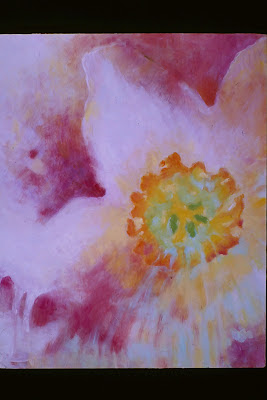Happiness is having my bedside book-stand filled with books. In fact, I've been on something of a book-buying spree lately. We used to have so many books, we contemplated getting rid of one for every one we bought. We didn't follow through, but these days, rather than adding more, I (mostly) go to the library. But when I was in our region's best bookstore the other day--off in another town--I had a good time picking out several to add to my bedside pile ... with a few more later from our local store.
One was Karen Le Billon's
French Kids Eat Everything, How our family moved to France, cured picky eating, banned snacking, and discovered 10 simple rules for raising happy, healthy eaters. I dug right into it when I got home and finished it the following evening. There is something about those French, who know so well who they are, that captivated me. The author, a Canadian academic married to a French academic, writes of the year their family, including two young children, spent in Brittany, her husband's home. The book describes their efforts to adopt French ways of eating, finding them to be healthier and more sensible than the North American which can lead to obesity and picky eating.
In order to have their flavor-appreciation expanded, French babies and toddlers are repeatedly given new tastes to try. These might start out as a bit of pureed veggies in their milk and then go on to soups or inviting little soupçons. (A small amount of whatever the parent is eating.) If the child rejects it, he/she will be offered it another time ... and another. Simply to taste. In fact, the author says that the French figure it can take up to eleven tastings to bring someone around to liking something. Nor are children forced to eat it. (Nor is food used as a punishment nor as a bribe. And it certainly is not allowed to become a plaything.) But (and I thought this important) the child will not be given a substitute food. If little Pierre turns up his nose at fish, his
maman doesn't go back to the kitchen and make him a burger.
As well, food is only eaten at meal-times, lunch being a hot meal and the most important of the day. (Even the schools serve hot, freshly-prepared lunches--something, in fact, I
remember from my school days before fast-food and packaging came
along.) In France, shops close for lunch so that people can go home, cook, eat, rest. To use the author's examples, a traditional lunch consists of a first course (such as paté with pickles), a main course (say, beef with potatoes), a salad/cheese course, and a dessert which can be fruit, yogurt, chocolate.
Except for children who have a
goûter between lunch and dinner, there is no snacking. (The
goûter is part of the school routine and might include carrot sticks or a vegetable puree.) Parents (and this goes for bottle- or breast-fed babies) follow specific meal times. (As we did here in this country before Dr. Spock came along.) No eating between meals. In fact, the author indicates that no one seems to even
think of snacking. For one thing, it disrupts one's appetite. One will not be hungry by meal-time (which implies being cheated out of sitting down with convivial company and enjoying delicious food). If someone is hungry before, say, supper, it is suggested that next time, he/she eat more lunch ... or that he/she will thus really enjoy the soon-to-be-served supper.
The mentality, then, is that the child is not in charge; the parent is. (I hope it goes without saying that, of course, all this is done in a gentle, loving fashion.) Simply, French parents know they are in charge and that's that. It's just part of the routine, part of the national mentality. As a comparison, children in this country do not have a say as to whether or
not they will sit in a car-seat.
And, yes, the French prefer quality over quantity. A little of something good over a lot of something not so good--called
la mal bouffe, or "bad grub." The author relates how once, when in the car, one of her children suggested stopping off at a fast-food place. No, the French grandparents said--the food isn't good. But, it's fast, the child said. Which is why it isn't good, the grandparents replied. Then on getting home, the grandmother made (from scratch) some
pommes frites, those fabulous pencil-thin fries, to prove how exquisite the real things are.
Certainly, the French prefer fresh food--freshly grown, freshly bought, freshly prepared. Enjoying different tastes, they strive for a variety with different foods each day (except for bread). Meals are looked forward to with pleasure. As such, they are savored both in taste and in time. In fact, the French feel that the longer the meal--with the food eaten appropriately slowly, mind you--the brain will then have time to realize that the stomach is satisfied and doesn't need anything more.
As well as eating a wide variety of fresh food, the French adjust the size of their portions. Once when eating a luscious dessert, the French grandmother said, "A little portion is all I need. Otherwise, I won't enjoy it as much."
I'll end with this little bit of research that the author quotes: When shown the picture of a cake, the French said, "celebration." The North Americans said, "guilt." Simply, for the French, food is not fuel or something to be broken down into calories or nutrients as it is for us ... for the French, food is pleasure.
 |
| A shop window in Paris |











